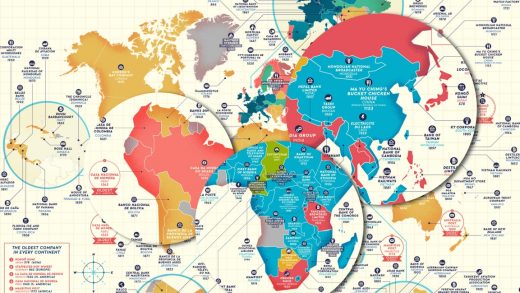This map shows which companies have lasted hundreds (and even thousands) of years
At a time when the average company on the S&P 500 only survives for two decades, it’s surprising to see that there are companies that have existed for centuries around the world. The oldest company still operating today is in Japan. It’s a construction firm called Kongo Gumi that dates to 578 and has specialized in building temples for 14 centuries. Today, though the company has been bought by a construction conglomerate, temples still account for 80% of its business.
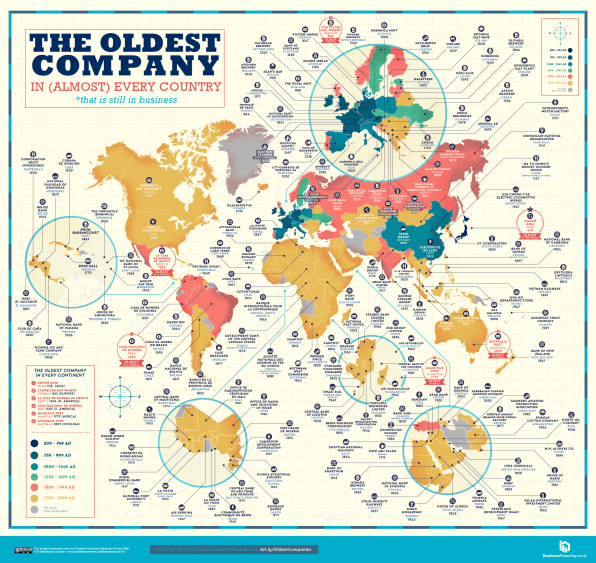
[Image: courtesy Business Financing]
This is one fascinating insight from a series of maps published by the British publication Business Financing, which lays out the oldest companies still in existence in each country. The organization conducted its own research and did not work with any professional historians or academic institutions, so take their findings with a grain of salt. But in the broadest sense, they offer a glimpse into the industries that helped shape each country’s economy. In many cases, they also reveal the darker aspects of history, as nations accrued wealth through slavery and colonialism.
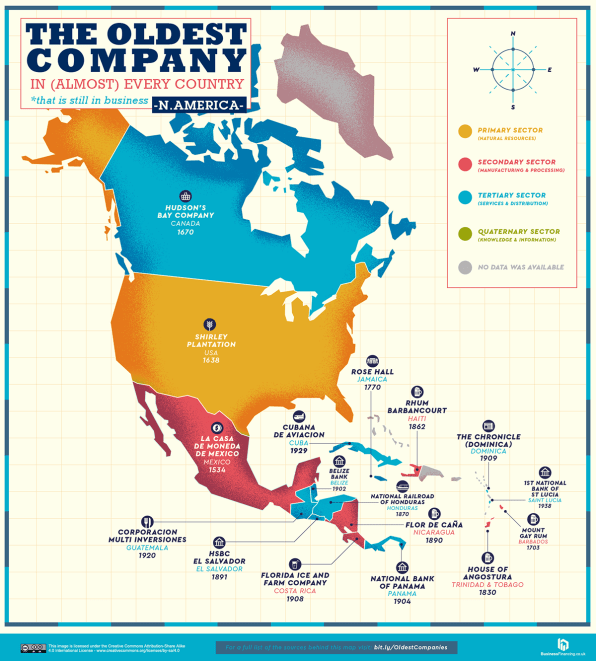
In the United States, for instance, the oldest company still running is the Shirley Plantation in Virginia, formed in 1613. The farm grew tobacco, which was then shipped throughout the colonies and to Europe, and it was maintained through slave labor.
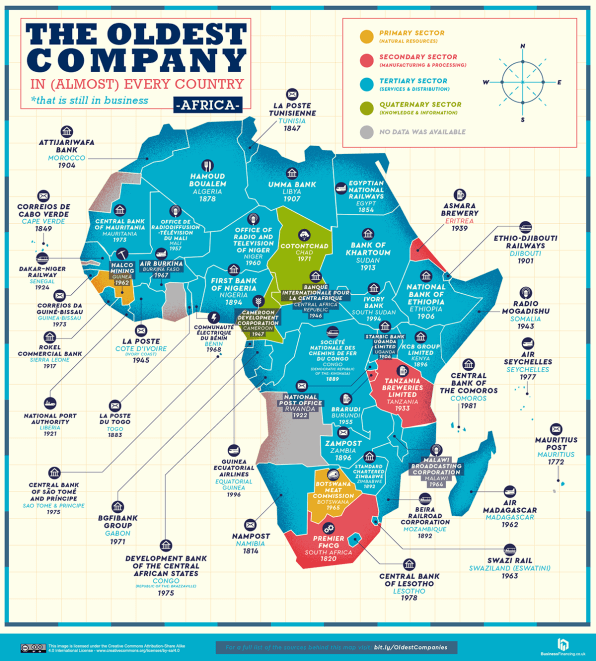
Colonialism is abundantly evident elsewhere in the maps. In Congo the oldest company dates back to 1889, when the country was under Belgian rule. It’s a railway company that still bears a French name—Société Nationale des Chemins de Fer du Congo—and is currently owned by the government of Congo. In Barbados, the oldest surviving company is Mount Gay Rum, which also happens to be the world’s oldest rum maker, founded in 1703. Barbados was a wealthy British sugar colony and a hub of the African slave trade, so the sugarcane juice used in the production of the rum largely came from plantations that relied on slave labor. Slavery was only outlawed in the country in 1807.
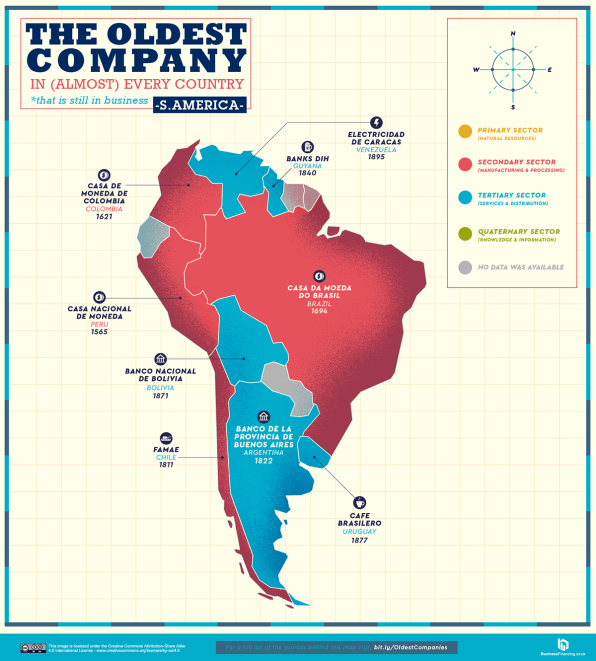
For the most part, the oldest companies in colonized lands are banks, railways, and post offices that were first established by colonial administrations to create an infrastructure that would better serve the colonizers’ economic needs. It was much easier for colonizers to export precious resources such as sugar, oil, or cotton back to Europe when they had functioning postal networks, transportation systems, and financial institutions. Later, when colonized countries gained independence, these companies were taken over by the newly independent governments in each country.
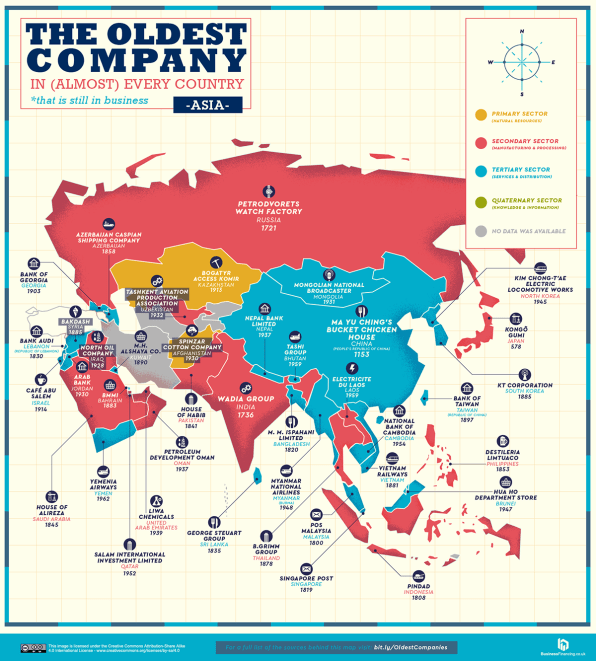
Meanwhile, in Europe, many of the oldest companies relate to traditional products that reflect the nation’s culture. There are many old food and drink companies in central Europe, for example. The oldest company in the continent is the Staffelter Hof Winery in Germany, which dates back to 862. In Ireland, the oldest company, Sean’s Bar, was founded in 900. In the Netherlands, Brand Brewery dates back to 1340. In Austria, the oldest company is a restaurant called St. Peter Stifskulinarium, which serves local food along with beer from a nearby monastery.
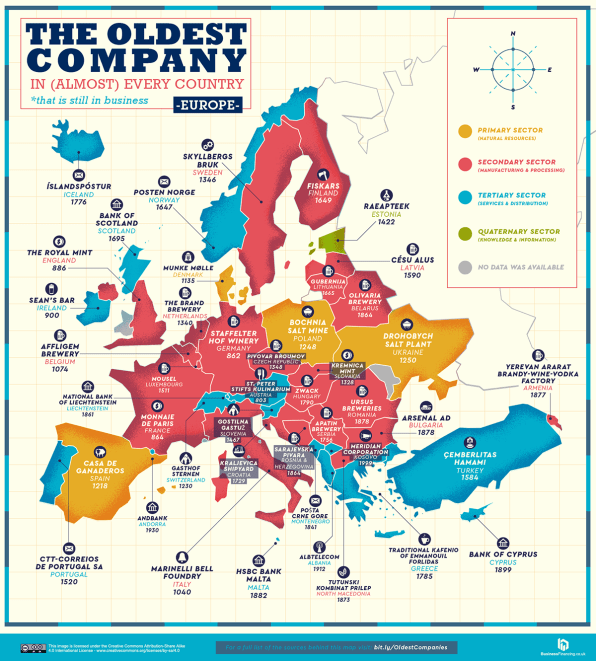
These maps provide an intriguing look at the companies that have managed to stand the test of time. But the maps also tell a story of how, for centuries, precious resources—including humans—were forcibly taken from some parts of the world and exported into others.
(99)

